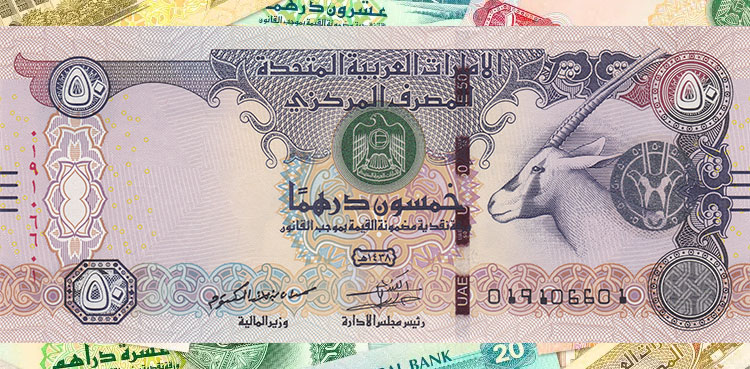Karachi/ Dubai, August 6, 2025 – The UAE Dirham (AED) has fallen to 76.93 Pakistani Rupee (PKR) today, marking a slight decrease of 0.04 PKR from yesterday’s rate of 76.97 PKR, as confirmed by verified data from trusted financial sources tracking interbank and open market rates.
AED to PKR-Latest Updates
This dip follows a strong performance in June, when the AED rose by 0.81 PKR, climbing from 76.44 PKR at the month’s start to 77.25 PKR by its close, with a peak of 77.6111 PKR on July 1, 2025. Despite today’s decline, the Dirham’s resilience underscores the United Arab Emirates’ innovative economic strategies and its prominent role as a global financial leader.
Currency Overview: AED and PKR
The UAE Dirham (AED), the official currency of the United Arab Emirates since 1973, is pegged to the US Dollar at a fixed rate of 3.6725 AED to 1 USD, as regulated by the Central Bank of the UAE. This fixed peg ensures the AED’s reliability, making it a trusted currency for international trade and investment across the UAE’s seven emirates. The Pakistani Rupee (PKR), Pakistan’s official currency since 1948, operates as a floating currency under the State Bank of Pakistan’s oversight, subject to fluctuations driven by domestic economic factors, global market trends, and geopolitical developments.
Economic Effects on Pakistan: Balancing Remittances and Trade
Today’s modest decline in the AED-PKR exchange rate provides slight relief for Pakistani businesses importing from the UAE, lowering costs marginally compared to yesterday. However, the Dirham’s overall strength, driven by June’s gains, continues to influence Pakistan’s economic landscape. For the millions of Pakistani expatriates in the UAE, the still-robust AED sustains elevated remittance values, which reached $717.2 million in June 2025, according to State Bank of Pakistan data, solidifying the UAE as Pakistan’s second-largest remittance source after Saudi Arabia. These funds are critical, boosting household incomes and driving economic activity in regions like Punjab and Sindh. Yet, the elevated exchange rate keeps import costs high for UAE goods, from luxury products to essential goods, posing challenges for Pakistani businesses and consumers. The AED’s US Dollar peg may continue to pressure Pakistan’s trade balance and elevate debt servicing costs for loans in USD or AED. Economic experts suggest Pakistan focus on enhancing export growth and stabilizing the PKR to address these pressures.
UAE’s Economic Dynamism Fuels Dirham’s Strength
The UAE’s economic vitality is driven by its strategic shift from oil reliance to a diversified economy, with significant investments in technology, sustainable energy, and thriving trade and tourism sectors in hubs like Dubai and Abu Dhabi. Supported by rigorous fiscal policies and state-of-the-art infrastructure, the UAE ranks among the world’s top economies, attracting substantial foreign investment, as noted in World Bank reports. The Central Bank of the UAE’s diligent management ensures the Dirham’s dependability, reinforcing its status as a trusted currency for global trade. This economic vision sustains the AED’s value, even amidst today’s minor dip.

Leave a Reply